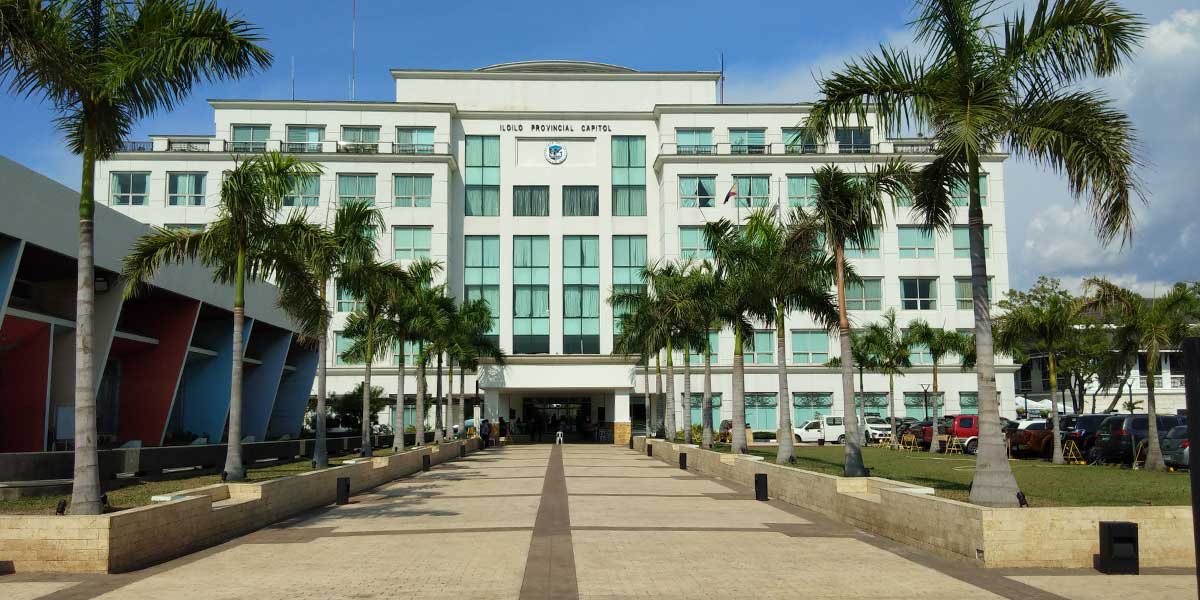
By Rjay Zuriaga Castor
There are only 53 of the total 123 projects under the Barangay Development Program (BDP) of the National Task Force to End Local Communist Armed Conflict (NTF-ELCAC) that were completed in the province of Iloilo in 2021.
The 53 infrastructure projects were in the towns of Igbaras, Leon, Miagao, and Tubungan, which were completed in 2022.
This includes 19 farm-to-market roads, 13 potable water system projects, 18 electrification projects, and three projects involving the construction and improvement of school buildings that cost P6.374 million.
“The selection of beneficiaries was handled by the Department of the Interior and Local Government and the Provincial Planning and Development Office,” said Engr. Romeo C. Andig of the Provincial Engineer’s Office.
Meanwhile, 65 of the total infrastructure projects for 2021 were terminated while five have not yet started due to failed bidding.
Andig explained that adverse weather conditions, particularly Tropical Storm Paeng in November 2022, caused severe damage to the project sites and access roads, leading to significant delays in the completion of the projects in December last year.
As a result of these delays and the inability to complete the projects as initially planned, the provincial engineer said the provincial government decided to terminate the contracts with the respective contractors.
Andig, however, noted that Governor Arthur Defensor Jr. has already approved an amount of P51.05 million in Supplemental Budget No. 1 for 2023 to fund the incomplete projects.
In 2021, the province received P720 million in infrastructure projects from the government’s anti-communist task force.
Of the total budget, P634 million was allocated to the construction of the 123 infrastructure projects.
The remaining P86 million went to non-infrastructure items such as capacity development related to agricultural development with the distribution of livestock, and technical vocational capacity development to include the provision of toolkits and assistance to indigent individuals and families.
The Engineer’s Office is the main implementer of infrastructure projects while the non-infrastructure items are under the Provincial Agriculture Office, Provincial Cooperatives and Development Office, and the Local Economic Development and Investment Promotions Center.
BDP is the flagship program of the NTF-ELCAC which intends to bring sustainable development programs to conflict-prone and conflict-affected communities.
COA OBSERVATIONS
In its annual audit of the Capitol’s finances and operations in 2022, the Commission on Audit (COA) called out the provincial government for prioritizing NTF-ELCAC bankrolled projects over projects funded by its development funds that are required by the law.
NTF-ELCAC has earned brickbats for red tagging or linking to the rebel movement persons and institutions who are critical of the government. Red tagging has been slammed as a way to stifle dissent and free speech and endangered groups and personalities perceived to be enemies of the state, including journalists.
The COA’s Annual Audit Report stated that projects bankrolled by the Capitol’s development funds were “not well-planned and/or procurement-and implementation-ready.”
It noted that ₱256.57 million, or only 29.1 percent of the current ₱882.69 million allocated in its ₱4.16 billion National Tax Allotment, were utilized.
COA also noted that of the 97 PPAs, 63 had ‘zero utilization’, indicating that funds were left untouched.
The commission also noted the underutilization of ₱167.43 million, or only 33.5 percent out of a ₱500.14 million budget, in continuing appropriations and utilizations stretching back to 2014, with 41 out of 87, or 47.12 percent, projects that remained in the doldrums.
The total utilized funds under Iloilo province’s development fund last year totaled ₱424 million, which is only 30.7 percent of the total ₱1.38 million allocated for both current funds in 2022 and continuing funds from 2014 to 2021.
COA found that like its 2021 findings, the main reason for the delay in the utilization of these funds was the prioritization of the implementation of PPAs funded by the Local Government Support Fund-Support to Barangay Development Program (LGSF-SBDP) of the National Task Force to End Local Communist Armed Conflict (NTF-ELCAC).
“It was noted that the implementing offices focused most on the implementation of the ELCAC-funded projects as the amount of funds and quantity of projects were substantial. Also, the period to utilize the funds was limited from April 2021 until December 31, 2022, amidst the pandemic,” COA said in its observations.
“Understandably, the implementation of other projects such as those funded by the 20% DF was significantly affected since these require almost similar tedious processes, such as the preparation of the DED or program of works for the construction works or infrastructure. Other than its ongoing infrastructure projects, the Provincial Engineer’s Office (PEO) alone had to divert its efforts to implement 118 infrastructure projects under the ELCAC,” it added.
Other reasons COA noted in its observations include late issuances or approvals of supplemental budgets, series of failed biddings, and balances of PPAs under continuing appropriations for the Provincial Roads and Bridges Development Project in 2020 and 2021 came from savings generated out of the appropriated amounts and revised contract amount of the projects.
COA observed that this ran contrary to Item 3.2.1 of the Joint Memorandum Circular No. 1 of the DBM, Department of the Interior and Local Government (DILG), and the Department of Finance (DOF), which sets the guidelines for the utilization of the development funds.
The provision states that development funds shall be utilized to finance the local government units’ (LGUs) priority development projects and that LGUs shall ensure that development projects to be funded out of the were well-planned and procurement-and implementation-ready.
The commission noted that the amount of the PPA balances would be programmed for further improvement of the concerned road sections and included in the Supplemental Annual Investment Program (AIP) No. 1 for 2023.





















